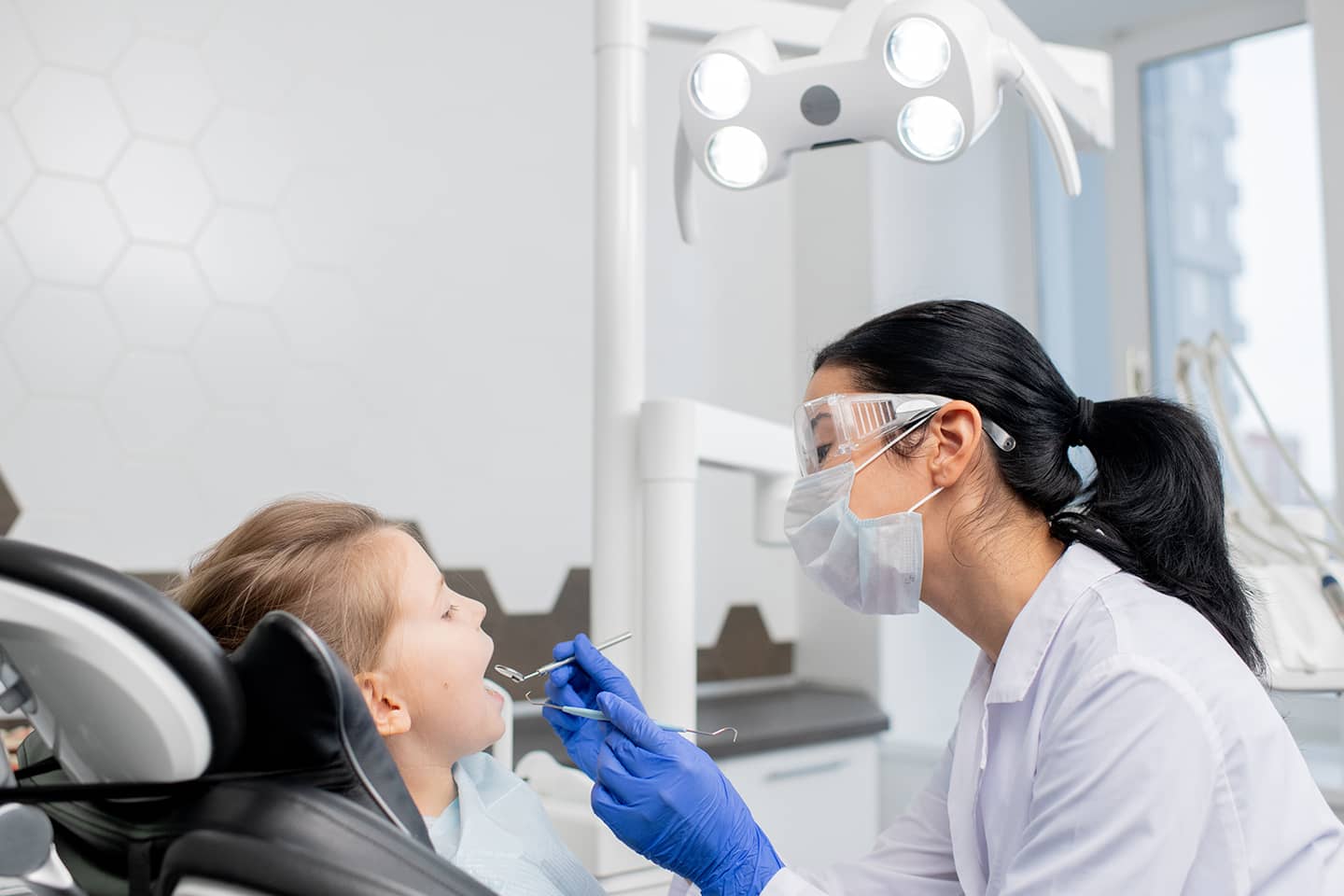Impacted canines are a common dental issue that affects young kids and teens. An impacted canine occurs when the tooth fails to come out of its normal position, usually because it doesn’t have enough space in the mouth or is blocked by other teeth. Impaction can cause a number of issues, including pain, infection, and difficulty eating or speaking.
If your child has an impacted canine, here are some important things to know.
What are Canine Teeth?
Canine teeth are the pointed teeth in your mouth. There are two on the top, next to your front teeth, and two on the bottom. They’re also known as cuspids or eye teeth, and they play an important role when you bite and chew.
Primary canines usually come in around the age of 16 months, and permanent canines come in between the ages of 9 to 12. Because they are the last teeth to come in, they don’t always have enough room to come in correctly and can become impacted.
What Causes Impaction?
Impacted canines can occur for a number of reasons. Common causes include:
- The jaw is too small to accommodate the tooth
- There isn’t enough room in the mouth due to crowded teeth
- The tooth is blocked by other teeth
- Unusual growths on the soft tissue
Signs and Symptoms of Impacted Canines
It’s important to keep an eye out for signs and symptoms of impacted canines so that you can seek treatment as soon as possible. Common signs may include:
- Difficulty eating or speaking
- Painful cheeks, jaw, or gums
- A visible swelling in the mouth
- General discomfort or pain in the tooth area
If your child experiences any of these symptoms, it’s important to seek dental treatment as soon as possible. At Youth Dental and Vision, our team of pediatric dentists specialize in treating impacted canines.
Call (303) 953-8801 to book an appointment at one of our four locations.
Treatment Options for Impacted Canines
There are a few treatment options available for impacted canines. Your dentist may suggest one or more of the following:
- Braces and brackets are used as eruption aids. By gently guiding the tooth into its correct position, braces and brackets can help shift the impacted tooth in the right direction.
- If your dentist observes that there is not enough space for the tooth to emerge, they may recommend removing nearby teeth to make room.
- Your dentist may decide to ‘watch and wait’. If the canine is a primary tooth and isn’t severely impacted, they may decide to keep an eye on the tooth and wait for it to erupt on its own. If the tooth grows in crooked, future orthodontic treatment will be considered.
- If the tooth is causing a lot of pain, or it doesn’t respond to any of the other treatment methods, your dentist may recommend extracting the tooth.
No matter what course of action your dentist recommends, rest assured that our team at Youth Dental and Vision is here to help. Don’t hesitate to call us with any questions or concerns about impacted canines.
Your Kids Dentist in Denver
At Youth Dental and Vision, we specialize in providing comprehensive pediatric dental care for kids of all ages. Our team of experienced pediatric dentists is here to help with any issues related to impacted canines or other oral health concerns. We use the latest tools and techniques to ensure your child’s teeth are healthy and strong.
If you are searching for the best kids dentist in Denver, or a kids dentist in Denver, call (303) 953-8801 to book an appointment at one of our four locations.
We look forward to helping your child have a healthy, happy smile!
FAQs About Impacted Canines
Is It Normal for Canines To Be Impacted?
Yes, it’s quite common for canines to be impacted, especially the upper canines. It’s important to seek treatment if your child is experiencing any symptoms or signs of impaction.
What Happens if an Impacted Canine Is Left Untreated?
Left untreated, impacted canines can cause a number of issues, including infection, the development of cysts, overcrowding, and damage to the surrounding teeth.
How Long Does It Take To Move an Impacted Canine?
The length of treatment can vary depending on the severity of the impaction. Treatment could take anywhere from a few months to a year.
What Is the Most Common Method Used To Treat Impacted Canines?
The most common method is to surgically expose the tooth and allow it to come down on it’s own. This process is usually done in combination with braces and brackets to help guide the tooth into place. In some cases, it may be necessary to remove one or more of the surrounding teeth to create space for the canine.


